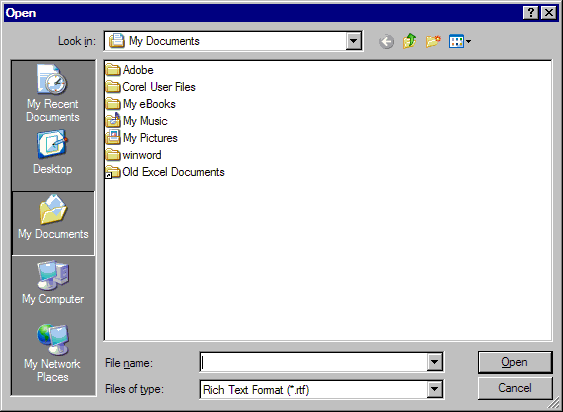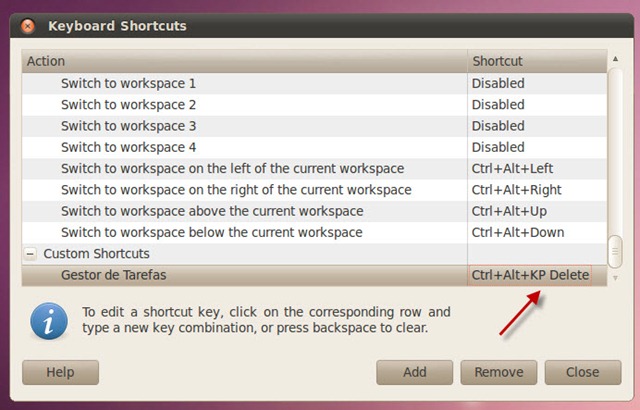

- PREFERENCE MANAGER WINDOWS CTRL ALT DELETE HOW TO
- PREFERENCE MANAGER WINDOWS CTRL ALT DELETE FULL
- PREFERENCE MANAGER WINDOWS CTRL ALT DELETE PASSWORD
PREFERENCE MANAGER WINDOWS CTRL ALT DELETE PASSWORD
You can simply right-click on your taskbar and choose Task Manager.Īgain, if you want to change your password on your remote desktop, you can manually do so. If you are planning to use the shortcut key Ctrl + Alt + Del just to open the Task manager on your remote desktop, then you don’t have to.

Now, physically on your personal PC’s keyboard, press the key combination: “ Ctrl” and “ Alt”, and then manually click the “ Del” key on your remote Desktop’s On-Screen Keyboard window. Now, type “ osk” (for on-screen keyboard – short form), then open the “ On-Screen Keyboard” in your remote desktop screen.ģ. As you are connected to the Remote Desktop, click the “ Start”Ģ. Īlso Read: Enable Remote Desktop on Windows 10 under 2 Minutes Method 2: On-Screen KeyboardĪnother trick that you can use to make sure your “ CTRL + ALT + Del” works when you are in a Remote Desktop connection is:ġ. The “Ctrl+Alt+End” key is the new alternate combination that will send Ctrl+Alt+Del in Remote Desktop Session. Once you are connected to the Remote Desktop Session, perform the action using CTRL+ALT+END as the alternative key combinations instead of CTRL+ALT+Delete. Now, navigate to the General tab and type the Computer’s IP address and username of the system to which you want to connect remotely, and click Connect.ĥ.
PREFERENCE MANAGER WINDOWS CTRL ALT DELETE FULL
Make sure to select the ‘ Only when using the full screen’ using the Keyboard drop-down.Ĥ. Click on “ Show Options” at the bottom.ģ. Remote Desktop Connection Window will pop up. Open Remote Desktop Connection by pressing Window Key + R on the keyboard and type “ mstsc” then click OK.Ģ. This key combination also works for older Terminal Server sessions.ġ. If you have a small keyboard where the num-key section is not there, and you have the “ Fn” (function) key which is usually on a laptop or external USB keyboard, you can hold down the “ Fn” i.e. You can find the “End” key in the upper right side of your screen located to the top right side of your “Enter” key. In Remote Desktop, you have to press the key combination: “ CTRL + ALT + End”. Method 1: Use “CTRL + ALT + End”or “Fn + End” In this article, you will get to know about some methods that you can use as an alternative for “ CTRL + ALT + Delete” while in a remote desktop connection. The “ CTRL + ALT + Delete” key combination won’t work because your own OS utilizes it for your personal system. If you are planning to learn how to send CTRL+ALT+Delete in Remote Desktop for changing a password, you have to lock the RDP screen or log off. One of the key combinations that don’t work is the “ CTRL + ALT + Delete” key combination. Send Ctrl+Alt+Delete in a Remote Desktop Session Method 1: Use “CTRL + ALT + End”or “Fn + End”.Send Ctrl+Alt+Delete in a Remote Desktop Session.One is the alternate key combination, and the other is the on-screen keyboard.

There are two methods to send Ctrl+Alt+Del in a Remote Desktop session. Previously, until the existence of Windows 7, these combinations were only used to open Task Manager. Now the question arises, how to send CTRL+ALT+Delete to a remote desktop ? These three combinational keys are generally used to switch users, sign out, open Task Manager, and locking the computer. However, there are some special cases with key combinations where some key combinations don’t work the way as expected. when you press the Windows key, type anything, press the Enter or backspace key, etc it acts on the remote machine that has been connected using the Remote Desktop. As soon as you connect to another system remotely, all its keyboard actions get passed on to the remote system, i.e. Microsoft Windows has a neat and smart diminutive feature – Remote Desktop which allows its users to remotely hook up to another system & handle as well as control it as if the user is physically present at the other system residing at another location.


 0 kommentar(er)
0 kommentar(er)
